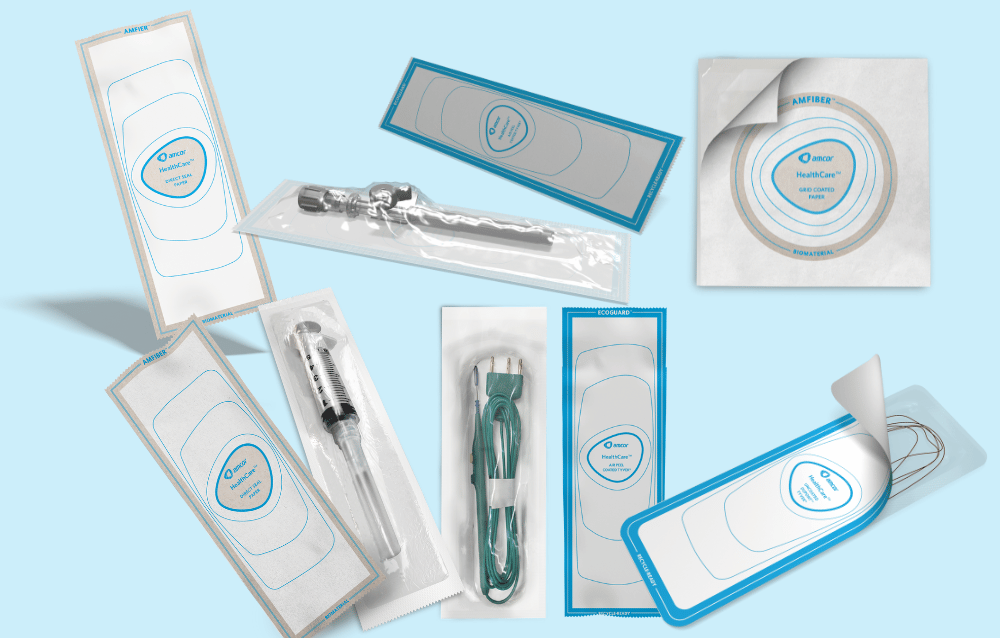Healthcare Packaging: Navigating Porous Materials
Medical
March 13, 2024Reading time: 3 minutes

A healthcare product’s packaging is almost as important as the product itself. The wrong packaging material could create numerous — and serious — problems.
Durability, sterility, ease of use, and sustainability are crucial elements to consider when choosing the right porous materials for the job. But, balancing those elements while factoring in cost is a complex process without an understanding of the most common healthcare packaging porous materials and their ideal use cases.
Paper: A Trusted Packaging Staple
It doesn’t get much more common than paper. Ideal for lightweight, less bulky healthcare products — such as the swabs used for COVID-19 tests — paper is a packaging original and can be produced in a way that reduces a manufacturer’s carbon footprint.
While it works perfectly for many lighter devices or tools, paper may raise concerns with lower puncture strength compared to other porous materials. Its potential challenges withstanding forces perpendicular to its surface could result in tearing or puncturing, making it a poor candidate for certain applications. Even if not visible to the naked eye, small tears in the paper could leave tiny, loose fibers inside the packaging and possibly contaminate the medical product.
It’s important to think of where paper packaging fits in your overall plan. Consider any tearing or puncture risks, and keep in mind that, even though it may reduce your carbon footprint compared to some materials, it isn’t generally recycle-ready after use. Additives used to help medical-grade paper withstand the wet environments associated with EtO sterilization render the paper incompatible with current recycling practices, and the paper may also come into contact with biohazards during use. Both scenarios render this paper difficult to process in current recycling systems.
High Durability with DuPont™ Tyvek®
Tyvek is a strong, spunbond polyethylene material that’s more resistant to tearing and puncturing than paper. That’s why it’s routinely used in healthcare packaging for such devices as implantable hip and knee joint prostheses, sharp tools, and other bulkier products. Unlike paper, there’s less concern for tiny fibers contaminating what’s inside.
The base material for Tyvek is technically recycle-ready and may be a good candidate for what’s called advanced recycling, where it’s broken down to its polymer level and used to make something entirely new.
Coated & Uncoated Materials: What You Need to Know
Uncoated materials often cost less, but is that the only thing that matters? Uncoated materials may not be as versatile as what you can receive when opting for the coating.
Paper and Tyvek can both be coated, but whether coated or uncoated, you’ll want to understand what you’re pairing them with for the seal. Uncoated materials must pair up with a material that has a compatible sealant built in to create a complete hermetic seal.
Amcor’s coatings allow:
- A wider sealing window
- Tight sealing at lower temperatures
- Sealing to a wide variety of substrates — saving you the trouble of needing to find one particular partner web to seal to it
- Brighter seal transfer upon opening
Coated products are especially ideal if you’re looking to package numerous different products with one material. Coated substrates can be used in many different material combinations, which can reduce your SKU management complexity.
The choice in using uncoated or coated material is yours, but keep in mind that coating can add value to your packaging.
Questions to Ask Before Choosing Your Material
The first question the Amcor team asks any customer is, “What are you packaging?” That’s the foundation that drives all decisions moving forward. Before getting started, ask and answer these questions:
- “What tear resistance do we need?”
- “What type of sterilization is required?”
- “Which machines are running?”
- “What are the machines’ form-fill seal capabilities?”
- “How much thickness and weight can the machines withstand?”
Above all, your products must be optimally sterilized and protected while adhering to all regulations.
These are questions we’ll ask upfront as we guide you through the packaging process, so give due consideration to these important factors prior to advancing your project.
Lean on Amcor’s Expertise
The experts at Amcor know all the substrates — including Tyvek and paper, whether coated or uncoated — inside and out. We understand that many factors play a role in healthcare packaging solutions, including sterilization methods. We’d love to discuss the options for your products, so reach out to the Amcor team at your convenience.
In the meantime, we’ve created a guide that details the intricacies of packaging for the highly specialized medical industry. Click the link below to access a free copy of our guide, Amcor Calibrate™ Technical Service & Support: An Overview for Medical Device Manufacturers.

*DuPont™ and Tyvek® are trademarks or registered trademarks of E.I. du Pont de Nemours and Company or its affiliates.
Marketing Product Manager, Form-Fill-Seal
